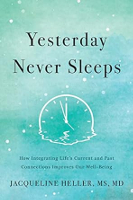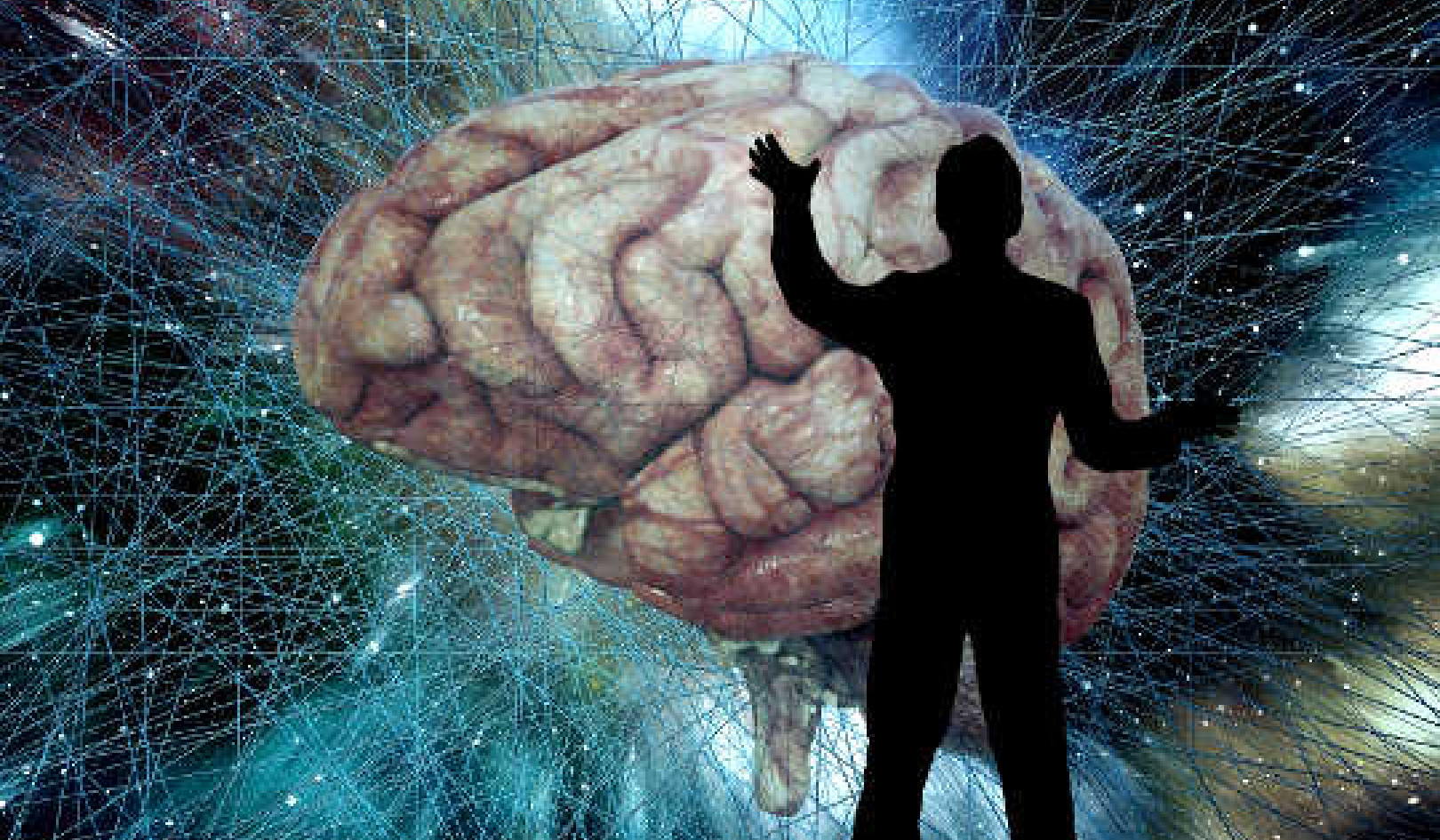
Image by WOKANDAPIX from Pixabay
Beware of false knowledge.
It is more dangerous than ignorance.
— George Bernard Shaw
Today’s digital/social media environment represents a massive paradigm shift that makes being mindful and reflective more crucial than ever before. Yet without regular face-to-face connection, empathy and compassion can diminish or disappear.
Online, people can present a false version of themselves, making empathy difficult. Children often establish artificial intimacy by commanding immediate responsiveness from Siri or Alexa, impairing their ability to learn how to consider another human’s mind.
Consequently, we must pay added attention to our internal selves when much of our time is spent on the digital surface. We should be aware of the dangers of the digital age to our psyches, as the following story from Japan illustrates.
A Scary Extreme
Consider the social shut-ins in Japan known as the hikikomori. This Japanese word describes a community of young people who suffer during adolescence and young adulthood; the suffering can persist for decades. Although they recently came to mental health professionals’ attention, the concept of hikikomori has been around long enough that some are now in their forties and fifties.
According to published reports, as many as 2% of young people, predominantly men in Japan, Korea, and Hong Kong, suffer from the hikikomori condition. These young men have myriad traumatic childhood experiences and dysfunctional families. As social recluses, they live cloistered lives, secluded in their rooms within their parents’ homes.
The salient features of the disorder include spending most of their time at home, no interest in work or school, and persistent withdrawal for more than six months. They are victims of bullying and social exclusion—in general, a common feature is they suffer from peer rejection. They’re usually shy and introverted temperamentally and may have avoidant attachments. Often, they have high expectations placed on them by their parents, but they have poor academic performance and disappoint perfectionistic parents.
Some argue that theirs is not a pathological process but a response symptomatic of a distressed society in dire need of communication rehabilitation. They don’t communicate with anybody about anything. Parents leave their food outside their door. They go to the restroom only when all is clear, avoiding contact with another human being. If they leave the house or interact with other people, it is often in the middle of the night, usually to convenience stores, when no one’s around. Surrounded by technology and electronic devices, they live a cyber-life online. Treatment is lengthy and complex and addresses depression, anxiety, and social reintegration—a tall order after decades devoid of human connection.
Does Social Media Lead to Asocial Behavior?
Though only a tiny percentage of the population is classified as hikikomori, the phenomenon is a warning shot across the bow for the rest of society. When you spend most of your time on social media, you will probably not be motivated to become a psychological detective. More to the point, whatever early childhood traumas you suffered or whatever burdens you experienced to place on present behaviors, you’re going to be more vulnerable to them because you’re entirely unaware of how they affect you.
Is this a culturally specific phenomenon or an emerging psychiatric disorder that exists everywhere? Unfortunately, there is growing evidence of the latter—young shut-ins exist worldwide. The pandemic has only worked to spread this shut-in phenomenon.
While this trend has gained steam recently, I had a patient, Earl, 20 years ago, who seemed to possess shut-in tendencies. Earl was born in Asia but raised in the United States. He was the only child of a very accomplished and successful professional couple who set high academic expectations. Unfortunately, Earl was an average student and not very academically inclined. As a result, he was a great disappointment to his parents. Earl was exceptionally talented artistically, but these talents were neither valued nor promoted.
Feeling like he was constantly disappointing his parents, Earl could not manage the stress. He gave up, becoming a hermit with little motivation to do anything besides leaving the house to see me once a week. Otherwise, Earl stole out at night to convenience stores to get food and new video games. When I recently read about the hikikomori and others like them, I recalled Earl and how he exhibited similar behaviors.
New Challenges for Human Connection
I fear that hikikomori is merely an exaggerated version of people acting out some of the struggles experienced by American youth—especially by Gen Z kids born from 1997 to 2012. They have an unprecedented involvement in technology and spend more time in the virtual world than in the real world. The average 10-year-old boy conducts his social life from a gaming headset in his bedroom, playing Minecraft with many other kids, each isolated in their own homes.
When they get together, the only observable difference is they’re all in one room. Gen Z kids do not go on dates. Instead, they go out in groups. You can find a group of 10 kids sitting around the table texting to people within earshot. They have a remarkable paucity of face-to-face contact due to their use of smartphones. They do not interact much or make eye contact. Many don’t feel equipped to conduct or participate in a conversation. I recently spoke with a 13-year-old boy who said he doesn’t know how to talk to people and is afraid to go to school.
The Evidence Is Overwhelming
The digital age has put young people at grave risk of losing social skills and is driving them deeper into a technological desert devoid of human relations. Teenage girls are outwardly focused and lured into body image obsession, one-third of whom suffer worsening self-image after being online. Furthermore, computer-generated influencers are becoming widespread.
The New York Times recently reported that 1.6 million people follow “Lil Miquela,” a manufactured supermodel. Named one of the 25 top influencers by Time magazine, this 19-year-old virtual visionary is the first robot to go viral online. Hers is the voice of change; her fan base has grown from 1.6 million followers to 3 million followers in four years.
Feature films such as Lars and the Real Girl and Her satirize the predicament. In the former film, Ryan Gosling is delusional, madly in love with his humanized pet—a perfectly lifeless, life-size blowup doll. In Her, Joaquin Phoenix falls in love with the perfect female archetype. She happens to be the voice of Scarlett Johansson, the sultry and ever-so-responsive speaking voice of his cell phone. In both movies, the male leads choose relationships with inanimate objects over human engagement.
These movies comment on the dearth of human contact, spoofing the perfect responsiveness of the inanimate choices in place of human attention. Though a relationship with a blowup doll isn’t healthy, the one with a highly artificially intelligent robot is much worse—the latter fosters the illusion of really “getting” you, providing ideal responses that sabotage the chance for relationships with real people.
These technological gadgets are akin to an undemanding pocket pet who can do no wrong or your video gaming friend in the adjacent room. There’s no room for mature human interaction.
The philosopher Michel Serres nicknamed this generation the “Thumbe-lina” generation—referring to a mutation allowing the ability to text with thumbs only. It requires only a small leap of imagination to foresee DNA epigenetic changes that will morph our hands into fingerless paws with one big usable thumb.
If you were to suggest to the Gosling or Phoenix characters that they might consider being more self-reflective, they would look at you with bewilderment. If you were to hypothesize that their love for non-humans might be rooted in something that happened in their distant past, they would stare at you without comprehension. And that’s the problem. They cannot gaze inward and backward. Instead, they are slaves to repressed memories and events, forming relationships that seem perfectly rational but are utterly irrational to us.
More to the point, these are ultimately unsustainable and unsatisfying artificial relationships, poor substitutes for human connection.
Mental Health Implications
Humans are social animals who form attachments and affiliate with others. Most of us are not born with innate tendencies to isolate and avoid human contact. Despite ourselves, we’re constructing barriers between people and cocooning at home, wrapped in cyber communications that warp our senses. We are losing the ability to touch, smell, and read the human face and body language.
Face-to-face dialogue within our youngest generations, including some millennials, is decreasing. Intimacy via exploring sexuality, sensuality, and romantic love relations has translated into having “friends with benefits.” Emotional closeness—falling in love with another person—is not fashionable to admit. Lives are paraded and displayed with photos posted, often multiple times per day, in flagrant detail on Facebook and Instagram.
Social media sites like Instagram are proven to be toxic, primarily to teenage girls. The embedded algorithms lure vulnerable teens into an addictive pattern of comparing themselves to others. Teens are reinventing their physical realities on Instagram with filters and airbrushing their faces and bodies. But in real life, where they can’t hide behind the perfect avatar, they seek gifts of plastic surgery from their parents to alter their features and bodies. As a result, girls as young as 13 suffer from low self-esteem, poor identity, worse body image, more depression and anxiety, and an unprecedented rate of suicides.
Since the written word and images dominate social media, people need to adorn themselves with body art to be known, understood, and distinguished from others. Tattoos and piercings supply a world of visible information that can be viewed without engagement, reflection, or mentalizing.
Passive entertainment, watching television, and obsessions with electronic gadgets are epidemic problems. Reports indicate that the average American child plays video games or is exposed to other forms of electronic media 5 hours a day, ranging up to as high as 12 to 14 hours per day.
Many single- and dual-parent families are stretched thinly due to limited time and resources. TV and video gaming guarantee built-in babysitting. Digital babysitters were desperately helpful during the pandemic when 2 million mothers had to leave the workforce and stay home full-time.
Lost are imagination and creativity. Highly structured entertainment, technology, and marketing-driven intrusive toys and games eliminate the need for imaginative play. Remember, imagination and dreams are free. Everything else induces passive behavior and entertainment, minimizing human interaction, face-to-face contact, and eye contact. Developing verbal skills, compassion, empathy, and being socialized in general requires back-and-forth rapport.
The COVID-19 pandemic has exacerbated the issues mentioned above. The stress effects on the population from the pandemic are formidable. Many people are terrified to go out. People with prior illnesses such as panic disorder, OCD, generalized anxiety, and depression are less likely to socialize and connect. Loneliness and social isolation continue to limit contact for so many. Grief and depression have increased dramatically. Since the global pandemic, diseases like PTSD, anxiety, and depression have become household terms. People are irritable, physically jumpy, and they are more inclined to flinch. They’re on edge.
We know that at least 40% of respondents to recent surveys reported by the CDC have expressed increased anxiety and post-traumatic stress symptoms. Recurring surveys conducted by the Journal of the American Medical Association (JAMA) revealed that the prevalence of depression has tripled during the COVID epidemic. Another study found that internet searches on the key words of “anxiety” and “panic” have doubled. How are we to improve the situation? First, by being self-reflective and mentalizing.
Copyright 2023. All Rights Reserved.
Printed with permission of the publisher,
Greenleaf Book Group Press.
Article Source:
BOOK: Yesterday Never Sleeps
Yesterday Never Sleeps: How Integrating Life's Current and Past Connections Improves Our Well-Being
by Jacqueline Heller MS, MD
 In Yesterday Never Sleeps, Jacqueline Heller draws upon decades of clinical experience to weave together a powerful narrative that contains neuroscience, memoir of her life as a child of Holocaust survivors, and patient histories involving a range of psychological ills and trauma.
In Yesterday Never Sleeps, Jacqueline Heller draws upon decades of clinical experience to weave together a powerful narrative that contains neuroscience, memoir of her life as a child of Holocaust survivors, and patient histories involving a range of psychological ills and trauma.
Dr. Heller offers a uniquely holistic approach, demonstrating how the therapeutic process and self-analysis help us make sense of our history and forge a better future.
For more info and/or to order this hardcover book, click here. Also available as a Kindle edition.
About the Author
 Jackie Heller, MD, a psychoanalyst, is board certified in psychiatry and neurology. Her professional experience as a practicing clinician has allowed her extensive insight into the vast range of human experiences.
Jackie Heller, MD, a psychoanalyst, is board certified in psychiatry and neurology. Her professional experience as a practicing clinician has allowed her extensive insight into the vast range of human experiences.
Her new book, Yesterday Never Sleeps (Greenleaf Book Group Press, August 1, 2023), delves into her personal experience with family trauma and helping others work through their own.
Learn more at JackieHeller.com.


























